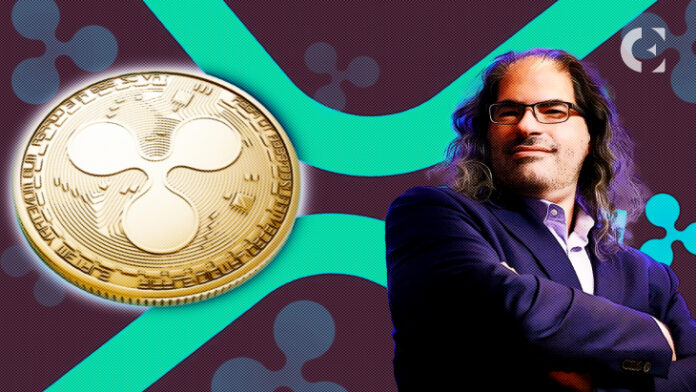- Ripple CTO David Schwartz recently tweeted about the time between Bitcoin blocks.
- He compared the technology to an analogy about two buses with varying passenger counts, concluding that averages depend on perspective.
- Schwartz recently started a debate on Twitter about content moderation and the government’s role in the same.
Earlier today, Ripple’s Chief Technology Officer, David Schwartz, tweeted an analogy on the average amount of time between bitcoin blocks, which stands at ten minutes. However, he stated that at any given moment, there’s an average wait of ten minutes until the next block. While this seems paradoxical, Schwartz insisted that there can be both an average block every ten minutes and a ten-minute wait until the next block.
To explain this, he takes the help of an example of two buses, with two and ten passengers in each, respectively. He noted that the average of passengers on each bus would differ depending on the perspective of the driver or passenger of a specific bus. He suggested,
Well, if you ask the drivers, one driver will say two, and one driver will say ten. The average is six. We have averaged over buses and counted each bus equally. But if you ask the passengers, ten will say ten, and two will say two. The average is almost nine. We have averaged over passengers and counted each passenger equally.
Concluding his argument, he settled that averaging block times or passenger waits can yield different results due to perspective and undercounting or overcounting, much like averaging driver-reported bus travel times. This occurs when some blocks are found rapidly, reducing the average time between blocks but having little impact on the time until the next block.
While some Twitter users were left confused about the analogy and its complexity, Schwartz clarified that “The French call it a “fish processus.” Meanwhile, another one of his followers reminded that Schwartz last posted about the time between Bitcoin blocks, titled “headbanger,” precisely 2,190 days ago on October 21, 2017. Thus marking the 6th anniversary of that post.
Given how vocal Schwartz is on X (formerly known as Twitter), he recently engaged in a debate about the roles of government and social media companies in content regulation. Schwartz highlighted that when people call for limitations on social media platforms, they might unintentionally be supporting government interference and potential penalties when these platforms are seen as behaving inappropriately.
Similarly, Schwartz criticized Cardano founder Charles Hoskinson for his view on the U.S. SEC supposedly favoring Ethereum (ETH) over other cryptos on October 17. The “ETHgate” theory alleges that Ethereum received favorable treatment from U.S. regulators, particularly the SEC, by not being classified as a security.
Disclaimer: The information presented in this article is for informational and educational purposes only. The article does not constitute financial advice or advice of any kind. Coin Edition is not responsible for any losses incurred as a result of the utilization of content, products, or services mentioned. Readers are advised to exercise caution before taking any action related to the company.










